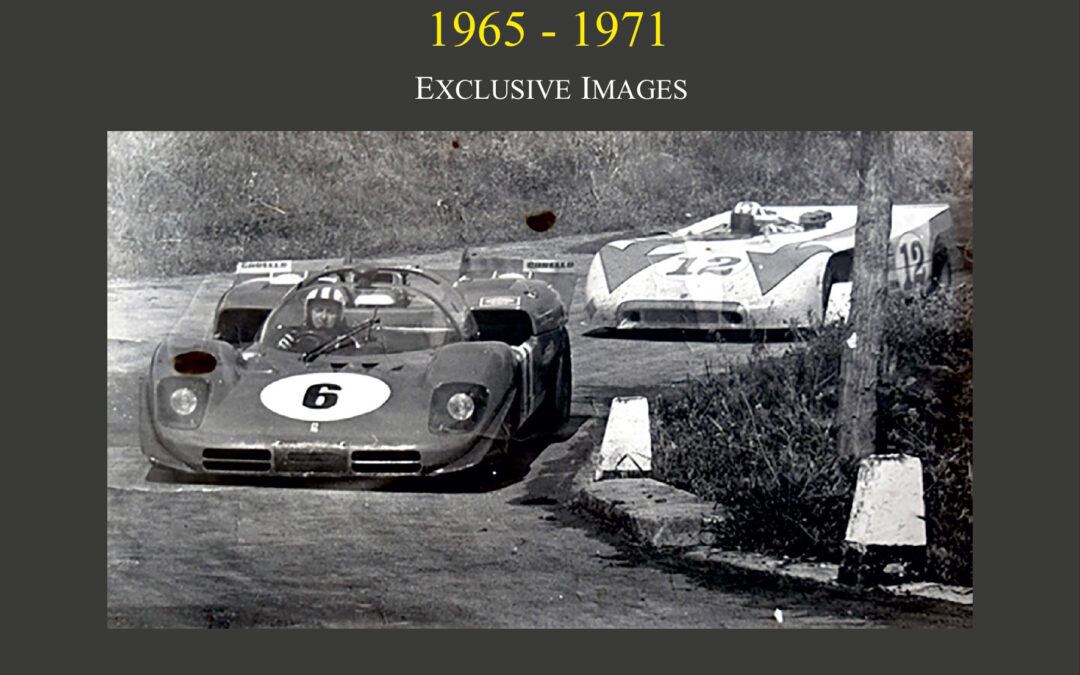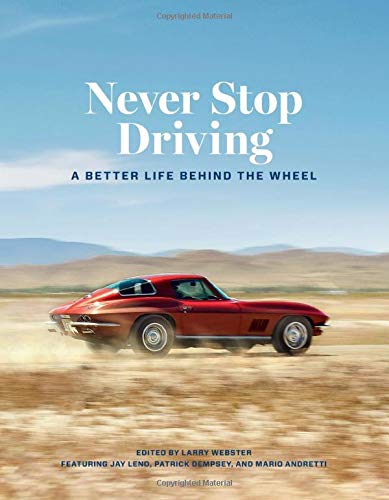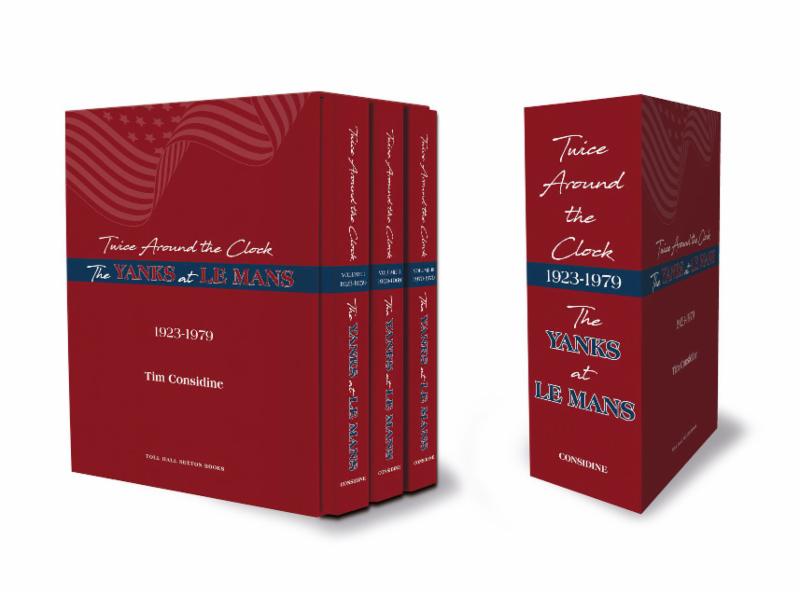
In his three previously-published books, Composite Materials: Fabrication Handbooks, Volumes 1-3 Author and Professor John Wanberg, took pains to explain the why and how of building with composite materials. Each page was allocated equally between photos and text.
In this new book of step-by-step projects, John takes a different approach. Instead of explaining the theory and what each component is made of, John cuts to the chase. Nearly every page is allocated to photos.
The pictures lead the reader through a detailed how-to sequence. From making the mold, to cutting the fabric, and finishing the part, all the information is here. Projects include everything from fabricating speaker enclosures to hood scoops and cell-phone cases. Some require only simple molds, while others rely on more sophisticated vacuum bagging methods.
Each chapter starts with copy, just enough to explain the project and the goals. Next comes the material panel: a list of all the tools and materials needed to duplicate the project seen in that particular chapter. Finally, the vast majority of each chapter is filled with the how-to photos. Photos that literally show each step along the way, from the initial sketch to the finished part.
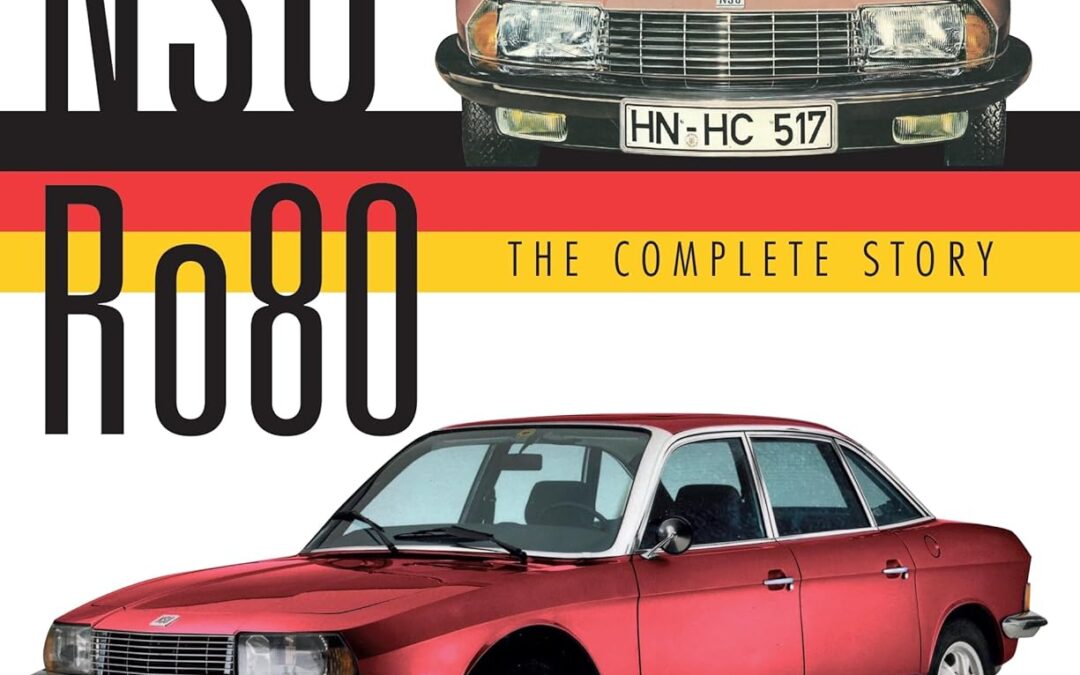
Launched in 1967, the NSU Ro80 had modern aerodynamic styling, a technologically advanced Wankel rotary engine and was voted Car of the Year in 1968. However, after the initial positive reception, the car developed a reputation for unreliability, with problems arising as early as 15,000 miles and many vehicles required a rebuilt engine before 30,000 miles. Despite the company resolving these reliability issues in both existing and new vehicles, and offering a generous warranty, the damage to the car’s reputation was done. The NSU Ro80 is the most celebrated motoring lost cause of the second half of the twentieth century, outranking the likes of the Edsel and the DeLorean because, unlike those statements of misplaced optimism and ego, it was a good car. Not just good: the NSU Ro80 is one of the great saloons. Launched in September 1967, the Ro80 was an all-new four-door five-seater from a West German company that – post-war – had never made anything other than economy runabouts, motorcycles and mopeds. That alone should have been enough of a risk, but this was also the world’s first purpose-built Wankel-engined family saloon. This compact, refined and elegantly simple power unit was the first really new concept in the realm of internal combustion engines to achieve mass production for ninety years. A car like the Ro80 could only really have come from Germany, where there was a passion for research and a pride in engineering not found elsewhere in Europe. With front-wheel drive, superb power steering and four-wheel disc brakes, the car had top handling and driver appeal. Quite simply, it was a masterpiece, considered by many to be the finest vehicle of its type in the world. But with one fatal flaw: its engine. With over 300 archive photographs, drawings and diagrams, this book tells the story of the NSU
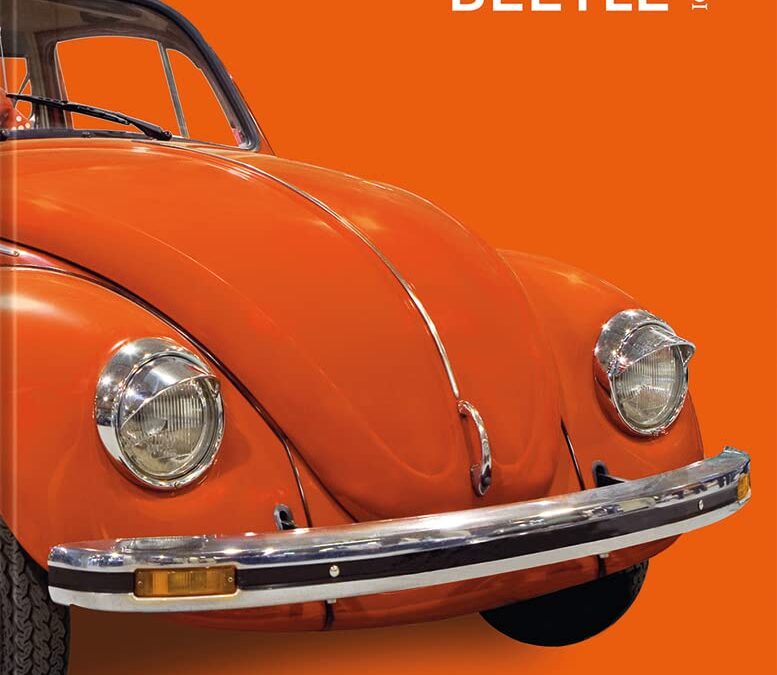
Everything there is to know about the iconic car: from technology to design, lifestyle, film, celebrities, and history
• The classic car from every angle: how a small car became a huge legend
• A new perspective and a sense of nostalgia: the perfect gift, not just for classic car fans
A classic, an icon, and much more than just a car. For many owners, the VW Beetle was practically a member of the family. For 65 years, the favorite car with its friendly exterior was a major part of the history of mobility. This fascinating book is a wonderful journey through time: emotional, nostalgic, and fascinating. From the very first model in 1938 to the final Beetle to roll off the production line in Mexico in 2003, from Herbie the iconic movie Beetle to quirky design variations, from the Beetle amphibious vehicle to the Beetle police convertible, we all associate this iconic car with a host of memories and even more emotions. And if you spend enough time leafing through this volume, you might just hear the distinctive sound of the boxer engine…
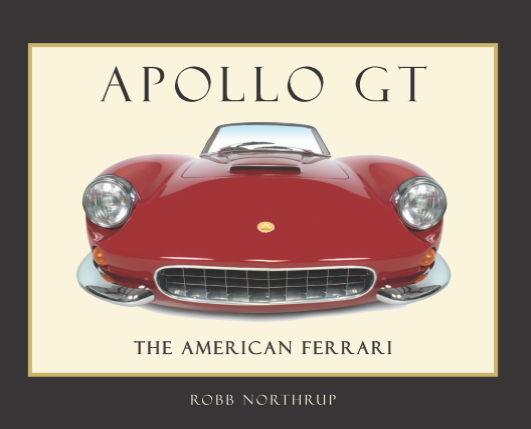
‘If a Buick Special ever got a fierce ambition to become a Ferrari – and tried hard enough – it would be likely to end up just about like this.”
Car and Driver magazine – September, 1963
Such prophetic words from Car and Driver magazine back in 1963 underscore the goal of three California twenty somethings who sought to build a world-class grand touring sports car. And, for a while, found themselves on equal ground with Europe’s best.
Their concept: A marriage of Italian style and the mechanical excellence of a premier American manufacturer – Buick – to create a true gran turismo sports car with head-turning looks, outstanding performance and comfort, and something that, up to then, was not common among European exotics: Reliability!
Their challenges were legion: A complex product combining hand-crafted bodies with mass-produced engines and transmissions on an assembly line spanning two continents and an ocean. A limited capability for product development and testing. And the need to create a marketing program to promote the car to an enthusiast public as well as develop a distribution channel to get the car into their hands. All this with limited operating capital.
The result? The Apollo was highly praised by both road testers and owners alike. “Workmanship is of the highest quality…comparable to cars costing twice that of the Apollo” crowed one magazine report. “…the Apollo handles as well or better than a 2+2 Ferrari, an Aston Martin DB4 or a Sting Ray Corvette,” exclaimed another. High praise indeed from the critical press!
And the owners? “I dearly love my Apollo!” enthused singer Pat Boone. And this from another owner: “It’s a wonderful work of art. You can see the quality. You can feel the excitement they felt when they were hammering it out, putting it together and driving it for the first time. It is a milestone, a one-of-a-kind car and no one can really compare anything to it. It stands on its own.”
This is the story of the Apollo GT. The American Ferrari.
Details: 8.5″ x 11″, 138 pages. 87 color and black & white photos and illustrations.
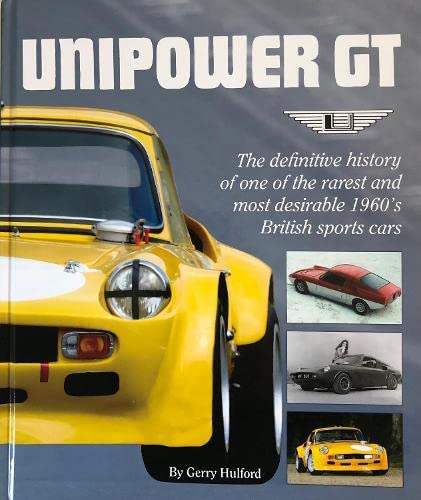
This fully authenticated publication written by Gerry Hulford, is a 500 copy Limited publication. Launched in 1966 to an admiring press and public alike, the Unipower GT took the specialist car market at the time by storm. Considered by the cognoscenti as the best of the limited production sports cars of the 60’s, the car appealed to both wealthy and enthusiast alike. In its later years the cars would embark on a chequered but never to be forgotten campaign of international sports car racing across Europe, almost qualifying for the 1969 Le Mans 24 hrs. Production ceased in late 1969 after just 73 examples had been built, but with still at least 70% production existing, they remain much sought after by collectors the world over. Gerry Hulford has assembled here an historical record of the marque in 172 pages, from its early production and beyond, with an amazing collection of over 420 photographs many of which have never been seen before, illustrating the extraordinary history of these unique cars. The story and photographs take you on an intriguing journey from its inception, development and production, before following owner’s cars across the world, many of whom have lovingly cared for some immaculate examples, as well as those who have devoted considerable effort to the restoration of their cars. The racing history from early 1967 through to today, is covered in detail and chronicles the many on-track endeavours against all odds. Detail on the cars also includes, technical information on suspension setup and a guide to what to look for when buying a Unipower GT. This is the most comprehensive and fully authenticated, by both its Founder and designer, record of the Unipower GT in all its versions and has enough historical information to satisfy the most demanding specialist car owner and enthusiast alike, the supports why it is still revered as the ‘Mini-Miura” of the 60s.
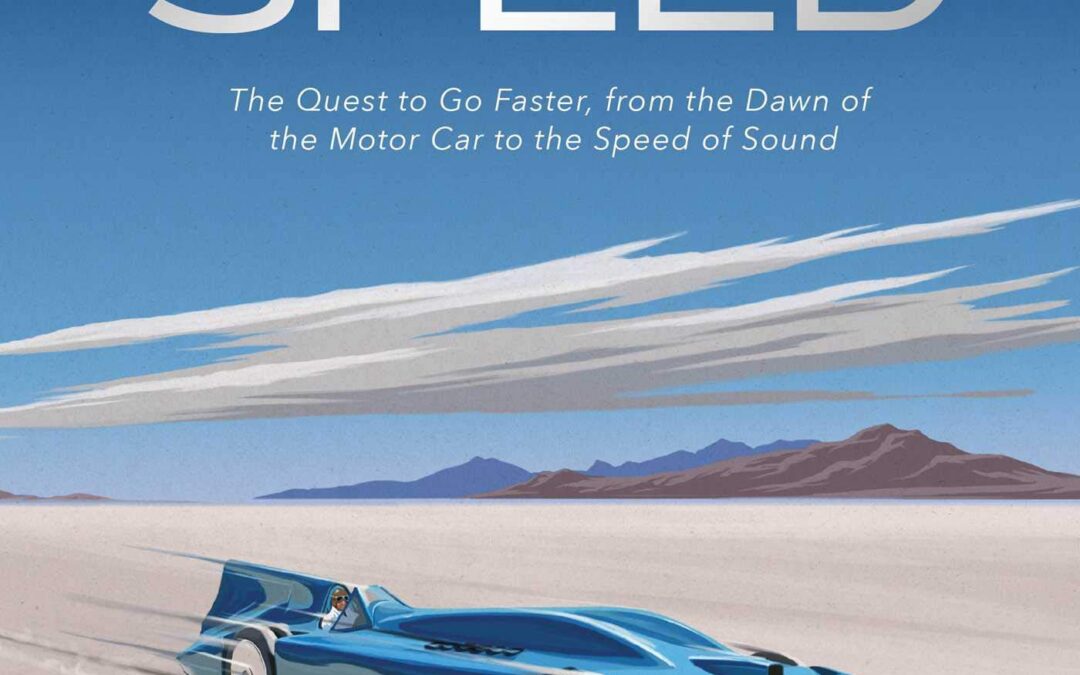
‘A special treat…The pictures and stories combine to provide a rich texture to telling the difficult story of why we chase speed like an addiction.’ Valerie Thompson, the world’s fastest female motorcycle racer
Ever since we built machines that could transport us, there has been a desire to find ways to make them go faster. For some, going faster isn’t enough – they want to be the fastest. This book celebrates those who have built the machines and driven them at ever greater speeds. This is The History of Speed.
Bestselling automotive writer Martin Roach tells the extraordinary story of those who have come to be obsessed by speed. From Camille Jenatzy, ‘the Red Devil’, who became the first man to drive at over 100kmh in 1899, through the golden age of Malcolm Campbell and his Bluebird, and on to the modern era of jet- and rocket-propelled cars, we have gone faster and faster. But this book is not just about these record-breakers, Roach also looks at the technology, the engines and the inventors who helped progress in speed at all levels, from Formula One to the supercars from the likes of Ferrari and Mercedes that are eagerly snapped up by collectors, rarely to be seen on the road.
Accompanied by some of the most stunning images of the cars and those who made and drove them, Roach tells a wonderful story of innovation and invention. He talks to some of the great drivers to find out what inspires them to risk their lives, and finds out from engineers how they developed their ideas. Along the way, we hear some remarkable tales and anecdotes, but also find out how the pursuit of speed can also have its costs, with many tragic heroes and heroines falling along the way.
If you’ve ever thrilled to the roar of a sports car engine, or loved the feel of the g-force as you accelerate away, or even looked on in wonder at a powerful engine, The History of Speed is a book that you will not want to miss out on.

A Robb Report Best Coffee Table Book to Gift in 2020
A Sports Car News and InsideHook Best Coffee Table Book for Car Lovers
Celebrate That Special Bond Between Men and Cars, and the Stories That Connect Them
Discover actor and director Ed Burns talking about his 1969 Oldsmobile Cutlass Supreme, a model he’d been dreaming about since his days pumping gas. NBA legend Shaquille O’Neal, whose favorite cars are trucks—he loves the wow factor of an International CV Series 6.6. Or Jay Leno on his 1955 Buick Roadmaster, big enough for him to sleep in while trying to make it as a comic. Filled with stunning photographs of the whole cars and of the exquisite details that make car lovers’ hearts beat just a little faster, as well as more than 80 personal stories, it’s a joy for every reader who knows that a car is never just a car.
Hardcover in slipcase
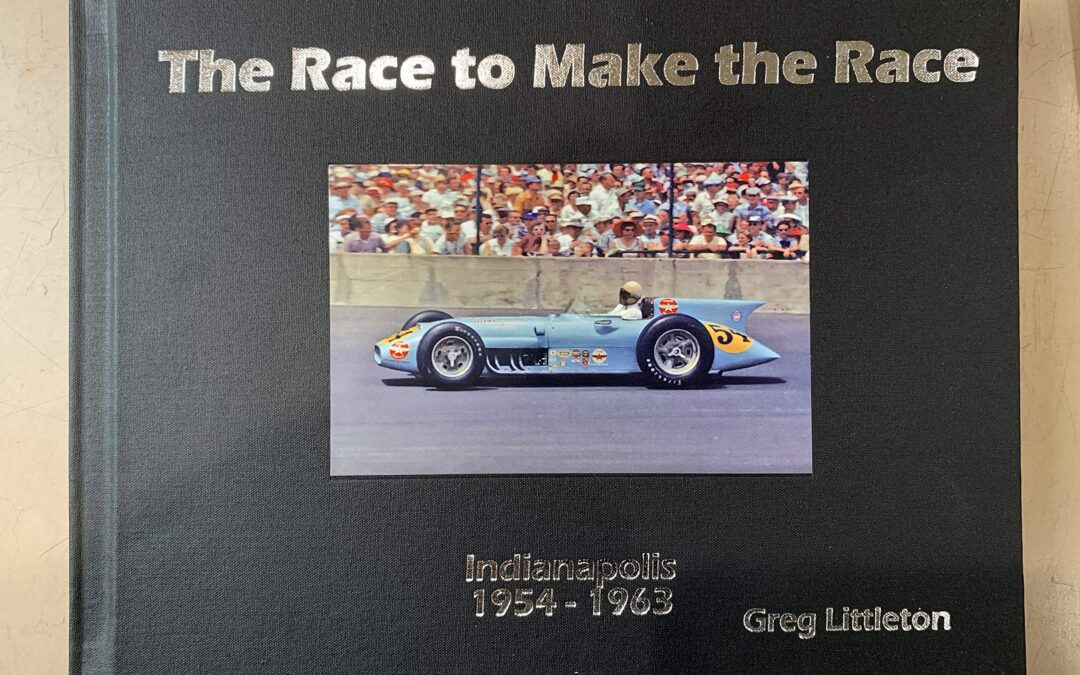
SIGNED
In his new book “The Race to Make the Race” Littleton chronicles a 10-year span (1954-1963) which was the peak roadster years at Indy and records what went on for every qualification attempt during this time period and each lap speed even if the attempt was yellow flagged. There is no mention of the races themselves as those results have been well-documented over the years.
Today’s 500 is lucky to attract 33 cars some years, but there was a time when the 500 really did have an actual Month of May and sometimes more cars went home than made the starting fields. Littleton’s book records by the actual time of day, weather conditions, attendance and all of the other happenings both on the track and in the Garage Area.
There are a lot of details in the book that you will never see anywhere else today. During the years in question the drama around the efforts to find speed just to qualify were often nearly as interesting as the actual race.
“While I was doing the Roadsters book I got the idea about doing a book on qualifications for the Indy 500,” said Littleton. “I got some qualifying information from the Speedway records when I was doing my first book. It was fun to do. I wanted to give the story on the successes and struggles each driver went through to try and make the Indianapolis 500 those years. The Bartholomew County Library was a big help in assisting me. They were able to get the microfilms from the Indiana State Library. I probably made 75 trips down to the local library to gather the information I needed.”
Littleton also mentioned two of the area’s standout racers at Indianapolis. Larry Crockett of Columbus who was the fastest rookie qualifier in 1954 and in the 500-mile race that year he ended up being the top finishing rookie over Pat O’Connor of North Vernon.
Littleton said Crockett, who died in a racing accident in Pennsylvania in 1955 right before he would have attempted to make his second Indianapolis 500, would have been a candidate to win the Indy 500.
“He was so young when he was starting out,” he said. “Nobody knows how his career would have turned out. If he had three or four years on him then I could have given you a better estimate on him. He was fast enough. There were some brave souls in 1954 and they said Larry Crockett was the best young driver in the United States.”
Like Crockett, Littleton gave his assessment on O’Connor who was killed in a first-lap accident in the 1958 race if he too could have won the Indy 500.
“Pat O’Connor definitely could have been an Indy 500 champion,” he said. “The legend of Pat O’Connor just keeps growing around here. You talk to guys and there is no doubt he was a natural. He was so smooth; everything came easy for him. He had the right head for it. He knew the days the car was good enough and the days it wasn’t.”
In documenting every lap of time trials during the 10-year span he chronicled there was one driver that stood out when writing the book was a young driver named Bob Scott in 1954.
“He had a good car in ’54 and on the fourth and final day of qualifying he was not in the show yet,” Littleton explains. “He jumped into a car that was not considered top-of-the-line equipment. He put three good laps together and they were going to be good enough to put him in the race, all he needed was one more consistent lap and he was in, but before he took the checkered flag he pulled into the pits and thus he didn’t qualify for the starting field. He apparently didn’t look at the flagman. He never did say why he pulled off.”
If Littleton had to pick a Mount Rushmore of Indy 500 champions his list would include: Bill Vukovich, A.J. Foyt, Wilbur Shaw and Al Unser Sr. Littleton also gave mention to 1963 winner Parnelli Jones.
“He was probably the least successful great race driver,” he said. “He would consistently beat Foyt in sprint cars, but he only won Indy once.”
On the sale last month of the Indianapolis Motor Speedway to Roger Penske, Littleton had this to say.
“Who else cares enough about racing and has the business acumen than Roger Penske?,” he asked. “He has everything that can make it work. Every decision he makes you may not like, but he has the best interest of the speedway in mind.”
Penske becomes the fourth owner of the track. The Hulman family had owned the track for 74 years.
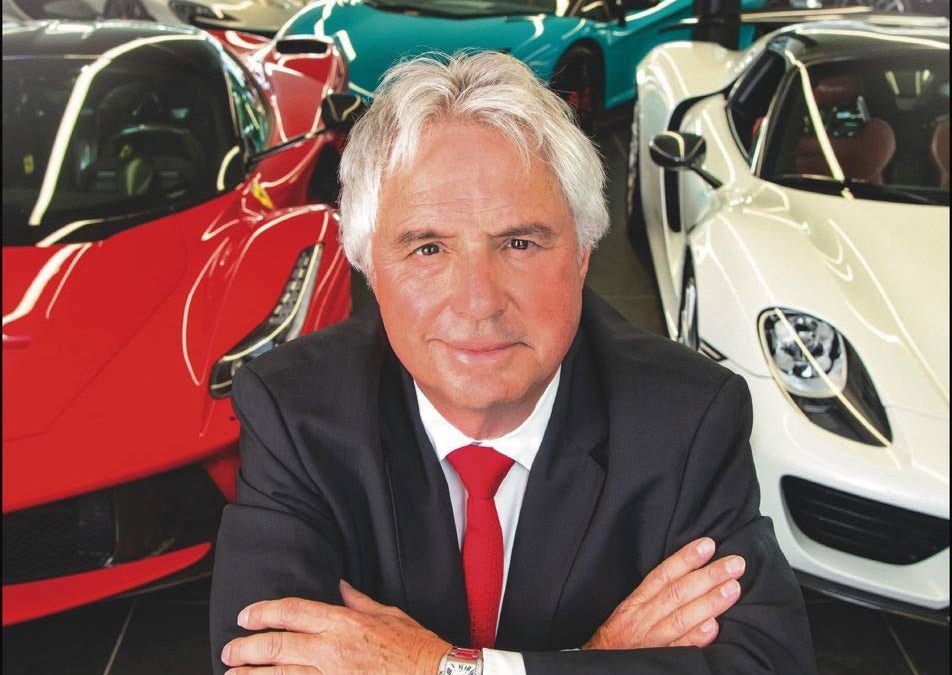
The car world is full of fascinating characters, but few have a story to tell quite as remarkable and inspirational as Tom Hartley.
Walking out of school at the age of 11, unable to read or write, Hartley set up his own business buying and selling cars. From that moment, he defied logic and ripped up the rule book on his way to the top. Today he runs one of the most successful independent family run performance and luxury car businesses in the world. He has built up an unrivaled reputation as “The Dealmaker.”
Tom has been at the top for over 40 years, survived and thrived through four recessions, and overcome three life threatening illnesses. In his own brutally honest words, Hartley tells his gripping story of a boy from a traditional Romany family who swapped the classroom for the cut-throat world of Glasgow’s car auctions, buying and selling his first car at the age of 12. Having decided to drive himself around illegally, he was only 15 when he had his first car crash, and they don’t come more spectacular than writing off a Ferrari Dino – nothing has ever been normal in the world of Tom Hartley!
Hartley had made his first million by the age of 17, but soon suffered major setbacks as his business went bust, and he found himself at risk of losing his sight without major surgery. Hartley started all over again, living in a mobile home with his wife and working from the back of a car. He had gone from hero to zero, but his burning desire to be the best saw him climb his way back to the top. His ability to clinch deals in some of the most bizarre places has become legendary, like buying a car in a sauna, while stuck in a traffic jam on a motorway, and even in a swimming pool!
Family has played a key part in the Tom Hartley story, his wife has been at his side all the way, and his two sons have followed closely in their father’s footsteps. Indeed Tom’s belief in family is one of the inspiring messages that comes through.
Hartley’s inspirational story is about the unshakeable belief in his own abilities, from a precocious schoolboy who had a dream, and then through sheer hard work and a burning desire to make the dream come true. This is not just a book for car enthusiasts but for anyone who has dared to dream. It’s a story that will inspire and motivate, and proves you can make the wildest dream come true if you want it badly enough.
Tom’s remarkable story is written with the collaboration of journalist Ken Gibson, for 24 years, award-winning Motoring Editor of The Sun newspaper.

Everything you need to completely restore your 1947-1955 first series Chevy pickup to better-than-new condition is shown in complete detail!
The Advance Design era (1947-1955) was historic for Chevrolet, topping all the production numbers every year they were in production. And for good reason. The post-World War II economy demanded a tough and well-engineered solution for this growing economy. Selling more than 2.5 million units during this era, Chevrolet quickly surpassed and controlled the light-truck market with style, utility, and logical engineering.
This era has been overlooked for long enough, and Deve Krehbiel, a well-known restoration expert from DevesTechNet.com who specializes in these trucks, puts his 40 years of experience restoring nothing but Advance Design trucks into an extensive and complete single volume. With more than 500 photos and detailed instruction for every aspect of a proper restoration, this book will be the restorer’s best friend. Deve’s companion book, Chevrolet Inline 6 Engine: 1929-1962 (SA455), explains in full detail the engine aspects of your project.
The Advance Design Chevy pickup is one of the most popular and highly prized vehicles at any venue. The author’s hope is that this book will give you the confidence and the knowledge to put your old Chevy truck back on the road in style. There is just nothing more interesting and more inviting than an old Chevy truck!

In the 1960s, model kit building was a huge hobby. Kids built plastic kits of planes, tanks, race cars, space ships, creatures from scary movies, you name it. Before baseball card collecting, Pokémon, and video games, model kit building was one of the most popular hobby activities. Car and airplane kits were the most popular, and among the car kits, muscle cars, as we know them today, were one of the most popular categories.
Many owners of real muscle cars today were not old enough to buy them when the cars were new, of course. Yet kids of the 1960s and 1970s worshiped these cars to an extent completely foreign to kids today. If you couldn’t afford or were too young to buy a muscle car back then, what could you do? For many, the next best thing was to buy, collect, and build muscle car kits from a variety of kit companies. Hundreds were made. Many of these kits have become collectible today, especially in original, unassembled form.
Although people still build kits today, there is a broad market for collectors of nostalgic model kits. People love the kits for the great box art, to rekindle fond memories of building them 40 years ago, or even as a companion to the full-scale cars they own today. Here, world-leading authority Tim Boyd takes you through the entire era of muscle car kits, covering the options,collectability, variety availability, and value of these wonderful kits today. Boyd also takes you through the differences between the original kits, the older reproduction kits, and the new reproduction kits that many people find at swap meets today. If you are looking to build a collection of muscle car kits, interested in getting the kits of your favorite manufacturer or even just of the cars you have owned, this book will be a valuable resource in your model kit search.
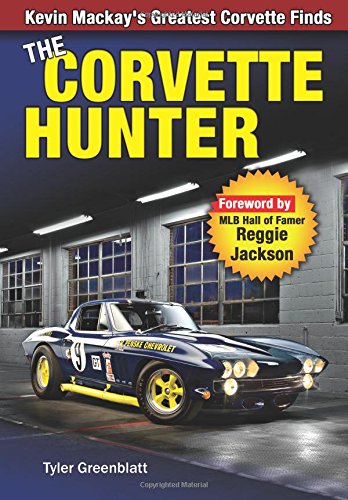
SOLD OUT
It is hard to imagine that a car with the racing pedigree of the Rebel Corvette could be neglected to the point of it being lost. Winning the GT class at the 1972 12 Hours of Sebring wasn’t enough to keep this car from becoming just another old wreck out behind the shed. It was many years before Kevin Mackay came to rescue this prominent machine.
Finding, documenting, restoring, and selling rare and valuable Corvettes is one of Mackay’s specialties. His business, Corvette Repair Inc., is considered the premier Corvette restoration facility in the country. However, it just wasn’t the Rebel L88 Corvette that he found and restored.
Mackay tells story after story of finding and restoring valuable Corvettes such as the 1960 Briggs Cunningham Le Mans racer that took 1st in class. He also tells stories of Steve McQueen’s 1966 Corvette, the 1967 Bounty Hunter racer, 1968 Sunray DX #2 and #3, and chassis #003 from 1953. If you like L88 Corvettes, no one has bought and restored more of them than Kevin Mackay!
Few authorities in the hobby could be counted on to provide this much entertainment in a single volume.

From Ross Brawn—one of the most successful figures in Formula One auto racing—comes a compelling insider’s account of what it takes to win, featuring practical advice for overcoming obstacles and becoming a champion both on and off the racetrack.
Formula One racing is a wildly popular global sport with millions of fans and billions more engineering dollars at stake. For four decades, Ross Brawn has been one of the most innovative technical directors and team principals in the high-stakes world of Formula One. He is considered the most successful competitor in the history of Formula One to date, and “the closest thing there is to a certifiable genius” (The Wall Street Journal). Leading Benetton, Ferrari, Honda, and Mercedes, he has worked with legendary drivers such as Michael Schumacher, Jenson Button, and Lewis Hamilton to make them Grand Prix champions. Now, in this fascinating book, presented as a frank conversation between Brawn and fellow Formula One competitor Adam Parr, Brawn reflects upon his career, shares the philosophies and methods that led to his success, and offers lessons that every leader working with teams—at work, play, or home—can use to achieve their own goals, too.
Brawn and Parr share details about the unique pressures of Formula One racing and the intense, cutthroat world they inhabited, where coming in second place is never good enough. Just as Phil Knight recounted his accomplishments and devastating setbacks in the building of the Nike brand in the New York Times bestseller Shoe Dog, this book also provides a blueprint for leading teams, imparting lessons such as “Embrace Humility,” “Invest in People and Culture,” “Strive for Simplicity, Manage Complexity,” and much more.

Dubbed ‘Warthog’ – or just ‘Hog’ – by those who fly and maintain it, the Fairchild Republic A-10 Thunderbolt II is the world’s undisputed close air support attack jet. As tough as it is ugly, it has built a fearsome reputation as a tank buster and infantry killer in conflicts around the globe, and its GAU-8 Avenger 30mm cannon strikes fear into the hearts of all unlucky enough to be on the wrong side of it.he A-10 was clutched from the jaws of retirement by the 1991 Gulf War. At the time of the conflict, the United States Air Force was making plans to shed it’s A-10 fleet, citing obsolescence and redundancy. As the ensuing conflict showed, nothing could have been further from the truth, and no other airframe could have provided the US and Coalition commanders with the sort of forward air control, close air support, combat search and rescue, and tank busting capabilities that the Hog did. Since then the A-10 has delivered capabilities to battlefield commanders in the Balkans (1990s), Afghanistan (2001 onwards) and the second Gulf War (2003 onwards), and Libya (2011). A-10s have flown around 11 per cent of Operation Inherent Resolve sorties (striking IS targets in Iraq) since combat operations began in August 2014.

Magnus Walker is one of life’s originals. Serial entrepreneur, fashion designer, TV presenter, motivational speaker, and one of the world’s most prolific Porsche collectors, the dreadlocked, tattooed hoarder of individual creativity is a very modern incarnation of idiosyncratic success. Raised in the grim, urban decay of Thatcher’s Britain, Magnus Walker left school with just two O levels and drifted for several years before buying a one-way ticket to America. Now, 30 years and three successful businesses later, by following his instincts, rejecting convention, and pursuing his passions, Magnus has succeeded against all the odds. Here, for the first time, is the full story of his journey from a Northern steel town to the bright lights of Hollywood, from a boy with little hope to an anti-establishment hero. Along the way we’ll witness his potent combination of inspiration and graft, discover his motivations and his ambitions, and come to understand his philosophy and the keys to his success. Inspiring and exhilarating, Urban Outlaw is a compelling tale of succeeding through pure instinct and determination by a man who was brave enough to follow his own path.

It is a living, breathing time capsule. It is America’s longest attraction and the most famous highway in the world. It is the Main Street of America, iconic Route 66, a highway of dreams. It is a grand adventure and the ultimate American road trip. If you motor west (or east) on this storied old highway, there isn’t enough time to see it all, to sample all of the delightful restaurants, to explore all of the quirky museums, to take in all of the wonderful photo ops, or enjoy a restful night under the neon at all of the time capsule motels on just one trip. So, make the most of your adventure with this guide to 100 of the best stops on legendary Route 66.

200,000 kilometres in 3,000 days across five continents. Or in other words, just 66 kilometres a day on average – which is quite enough for a 30-year-old Land Rover.
Amidst the Scottish Highlands, battered by the elements, stands a neglected Land Rover. It does not seem to be the ideal vehicle for a trip around the world, but Christopher Many believes otherwise. He has the dream of embarking on a tour de force to the frozen wastelands of Siberia, North and South America, and across the continent of Africa – equipped with little more than a passport, credit card and full tank of petrol. His goal? “To explore strange new worlds and boldly go where no Land Rover has gone before.”
Intelligently and with perseverance, Christopher scours the globe from Mongolia to Somaliland to find out what makes the earth “tick”. Soon enough the adventure turns into a sprawling n-dimensional tapestry of philosophical conundrums, rollercoaster emotions and first-hand observations in 100 countries. When he pulls on a few loose threads, a Pandora’s box of information is released, often at odds with conventional Western views. Christopher returns eight years later – exhausted, snake-bitten and malaria-infected – but with a few prized cogwheels in his knapsack, a greater understanding of the world we live in, and … with the love of his life.
Equal parts sophisticated lexicon on global affairs and darkly witty travel chronicle, his book presents a vivid picture of the adventures, agonies and joys of world travel, and asks some very “uncomfortable” questions … truly going “where few have gone before”.
Take a ride in Matilda’s passenger seat next to this vagabonding philosopher, provided you are not in a rush …




